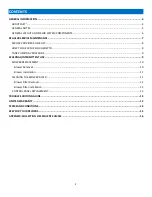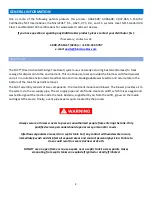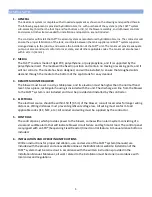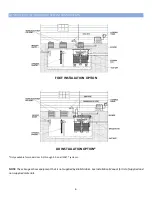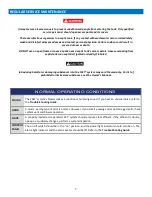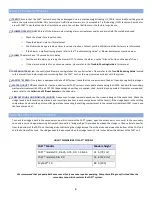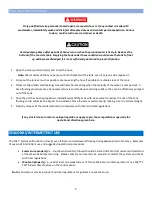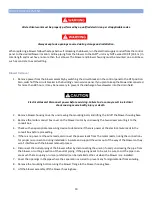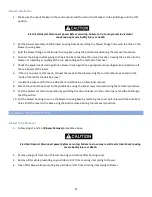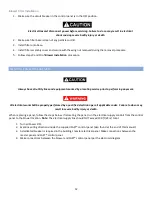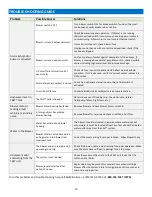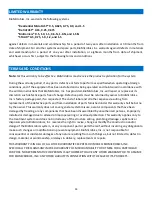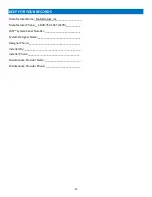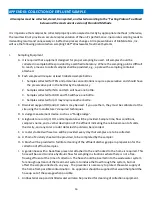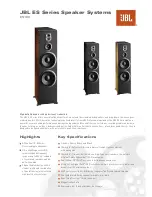
8
SERVICE PROVIDER CHECKLIST
TRAFFIC
Ensure that the FAST
®
system has not been damaged due to excessive weight loading (>1,750 lb. point load) over the ground
where the system was installed. Only normal yard traffic (lawn mowers, etc.) is acceptable. Traffic bearing (H-20) tanks can be made for
use with FAST® units that use the foot installation option. Consult local distributor or the factory for guidance.
BLOWER OPERATION
NEVER turn off the blower unless testing alarm, as treatment quality and drain field life could be reduced.
o
Check the blower for proper function
o
Clean the blower’s inlet air filter element.
o
The blower can be operated by a timer in certain situations. Contact your BioMicrobics distributor for more information.
o
If the blower is malfunctioning, please refer to the “Troubleshooting Guide” or Blower Replacement section below.
ALARM
The alarm has a ~10 second built-in delay.
o
Test the audible alarm by turning the blower OFF. To silence the alarm, use the “Silence” button on the panel’s front.
o
If the alarm is activated for an unknown reason, please refer to the
Trouble-Shooting Guide
in this manual.
VENTS & INTAKES
Clear the vent(s) and blower housing intakes of any obstructions. Please refer to the
Trouble-Shooting Guide
located
in this manual if you detect septic odors coming from the FAST
®
vent, as this may indicate a problem with the system.
SANITEE® SCREEN
If the system is equipped with a SaniTEE® screen, check that the screen is clear of debris. Clean by using built-in plunger.
WATER QUALITY
Effluent should be clear and odorless. All FAST
®
systems are capable of exceeding the USEPA standard for secondary
wastewater treatment (40CFR, part 133.102) depending on how they are applied, sized, installed, and operated. If samples are required,
please refer to the
Collection of Effluent Sample
in the Appendix.
PRIMARY SOLIDS AND BIOSOLIDS (SLUDGE)
Frequency of sludge removal depends on the size and design of the septic tank. Check the
sludge levels in both tanks/compartments and in multiple locations in each compartment of the tank(s). If the sludge depth in the settling
compartment is close to the port or outlet pipe intake connecting the settling compartment to the secondary treatment (FAST) zone, have
the tank pumped out.
HOW TO CHECK THE SLUDGE DEPTH
To check the sludge depth in the secondary zone, which contains the FAST system, open the access ports or cover(s) to the secondary
zone and insert a sludge-measuring instrument (a so-called “sludge judge”) Determine how deep the sludge is. Then calculate how far
from the bottom of the FAST unit the sludge is by subtracting the sludge amount from the distance between the bottom of the FAST unit
and the bottom of the tank. The sludge needs to be pumped when the sludge level is 3 to 4 inches below the bottom of the FAST unit.
HEIGHT DIMENSIONS OF FAST® MODELS
We recommend that you pump both zones even if only one zone requires pumping. Pump the settling zone first and then the
secondary zone, which contains the FAST® system.
FAST® Models
Module height
FAST® models 0.5, 0.625, 0.75, 0.9, 1.5 & 4.5
31 in [79 cm]
FAST® models 3.0 & 9.0
55 in [140 cm]
MyFAST® 1.0
80 in [203]
Содержание HighStrengthFAST 1.0
Страница 2: ...2...



